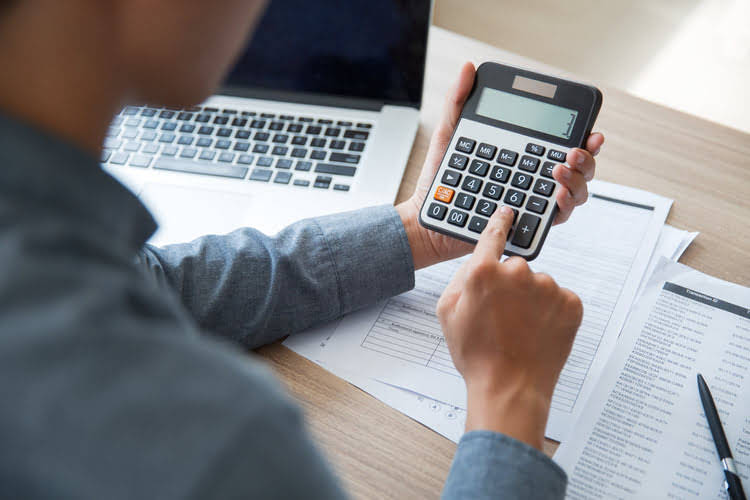
They are separate from treasury shares, which are held by the company itself. The term outstanding shares refers to a company’s stock currently held by all its shareholders. Outstanding shares include share blocks held by institutional investors and restricted shares owned by the company’s officers and insiders.
How to Calculate the Number of Shares of Common Stock Outstanding
If there are 100 shares outstanding and you buy one, you own 1% of the company’s equity. Issued shares refer to those shares issued by the company over time — yet, unlike outstanding shares, the number of issued shares includes shares repurchased by the company and held as treasury stock. How to calculate outstanding shares Of these terms, the two that you need in order to determine the number of outstanding shares are issued shares, and treasury shares.
Free Financial Modeling Lessons
- The company would be buying back outstanding shares to put in its treasury.
- Austin has been working with Ernst & Young for over four years, starting as a senior consultant before being promoted to a manager.
- Convertible debt is treated on an “as-converted” basis if the company’s stock is trading above the conversion price.
- Shares outstanding are the stock that is held by a company’s shareholders on the open market.
- From there, simply scroll down until you find the section in the 10-Q or 10-K called «Capital Stock.» All the details you need will be there, plain to see.
- Keep in mind that the process may differ slightly depending on the company and the availability of information, but these scenarios should give you a good idea of how to approach the calculation.
- These shares are any authorized shares, excluding treasury stock, held or sold to a corporation’s shareholders.
These shares are any authorized shares, excluding treasury stock, held or sold to a corporation’s shareholders. It excludes closely held shares, which are stock shares held by company insiders or controlling investors. These types of investors typically include officers, directors, and company foundations. The number of shares outstanding increases with the issue of new shares and stock split, while it decreases with share re-purchase and reverses split.
Treasury Shares
How Do Fully Diluted Shares Affect Earnings? – Investopedia
How Do Fully Diluted Shares Affect Earnings?.
Posted: Thu, 06 Oct 2022 07:00:00 GMT [source]
ABC Limited has an Authorized Share Capital of $ comprising shares of Face Value of $10 each. The company has an issued share capital of How to Calculate Shares Outstanding 8000 shares as of 31st December 2019. As of the same date, no treasury stock is outstanding, and all the issued shares are outstanding.
In other words, a company has issued shares and then bought some of the shares back, leaving a reduced number of shares that is currently outstanding. Outstanding shares are the aggregate number of shares that a corporation has issued to investors. This is an important number, since it is used to calculate the earnings per share of a publicly-held business. It is a less-commonly used number in the financial reporting of privately-held businesses. As discussed, floating stock is the total number of shares available for public investors to buy and sell. Sometimes the figure is expressed as an absolute figure (ex. 5 million shares) or as a percentage of the firm’s total outstanding shares.

- Adjusting for these events is necessary to accurately calculate outstanding shares and determine a company’s true value.
- Next, you’ll want to look for the common stock line item on the company’s balance sheet.
- Treasury shares are shares held by the company and cannot be sold on the open market.
- What common stock outstanding means, and why you should care The common stock outstanding of a company is simply all of the shares that investors and company insiders own.
- They also do not include preferred shares, which are stocks that do not carry shareholder voting rights, but do give their owners some ownership rights and pay a fixed dividend.
A stock dividend, on the other hand, is when a company distributes additional shares to its shareholders instead of issuing a cash dividend. The number of outstanding shares increases, but the price per share decreases proportionally. When calculating outstanding shares after a stock dividend, adjust the total number of shares issued to include the additional shares distributed as dividends. Let us consider an example of a company named KLX Inc. in order to illustrate the computation of shares outstanding. During 2018, the company repurchased 0.3 million common stocks and 0.1 million preferred stocks. Based on the given information, Calculate the number of shares outstanding of the company.
How Do Stock Buybacks Influence Shares Outstanding?

It is important to note that there are various categories of Shares, such as Authorized Shares, Issued Shares, and Outstanding Shares, although all the company shares differ in terms of purpose. And so, for a loss-making company, potentially dilutive shares can be excluded if they are “anti-dilutive”. In other words, as in this example, those shares would not be counted if they improve results, which happens most frequently (though not invariably) when the company is not profitable. Assuming all option holders exercise, Company A would issue 10 million shares. With the $50 million in cash, in theory it could instantly repurchase 5 million shares at $10 each. Authorized shares, meanwhile, are the maximum number of shares a company can issue, based on its corporate charter.
Issued Vs. Outstanding Vs. Authorized

- Investors can find the total number of outstanding shares a company has on its balance sheet.
- Volatility profiles based on trailing-three-year calculations of the standard deviation of service investment returns.
- Whatever method you use to gather this information will always be readily available online or easy to calculate, allowing for better investment decisions.
- Using the weighted average method to calculate outstanding shares is consistently accurate, even when the amount of shares changes over time.
- However, due to the fluctuations in share counts between reporting periods, the figure is typically expressed as a weighted average.
- These types of investors typically include officers, directors, and company foundations.
